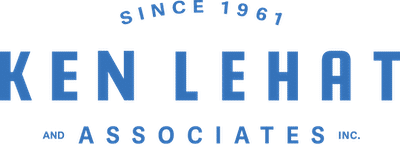How Auto Importers Save Thousands with Tariff Engineering and Substantial Transformation: An Interview with Steven Lehat
June 12, 2025 —
Interviewer: Steven, could you tell us a bit about your background?
Steven Lehat: I am a tariff consultant. I specialize in regulatory compliance and have been doing this for decades. My consultancy, Ken Lehat & Associates, focuses on various compliance areas, including tariff engineering.
On Tariff Engineering
Interviewer: What is tariff engineering, and how does it benefit importers?
Steven Lehat: Tariff engineering involves structuring imports to reduce duties. Classification refers to how a product is categorized under the Harmonized Tariff Schedule (HTS), and valuation is how the product’s worth is appraised. Both affect the final tariff owed. For instance, if a tariff is 10% and the product’s value is $1,000, you owe $100. If you can lower the appraised value or reclassify the product under a lower-duty category, you reduce your duty exposure.
There are thousands of classifications and at least six valuation methods, so strategic planning can lead to substantial savings-just like tax planning does for income taxes.
On Substantial Transformation
Interviewer: How does substantial transformation fit into tariff engineering?
Steven Lehat: Substantial transformation is one tool in the tariff engineering toolkit. It determines the country of origin of a product based on where a fundamental change in its identity, use, or classification occurs. Remember, different tariff rates can be pegged to different countries. For example, if Chinese components are sent to Vietnam for assembly, and significant processing occurs-enough to change the classification under the HTS-Vietnam could become the country of origin. That can reduce tariffs if Vietnam’s tariff rate is lower than China’s.
Interviewer: So, it’s not just a matter of shipping a product through a different country?
Steven Lehat: Correct. Simply relabeling or transshipping is illegal. To qualify as a substantial transformation, a real manufacturing process must take place. U.S. Customs looks for changes in tariff classification-often requiring a “double transformation,” meaning a product changes classification twice (e.g., components to sub assembly to final product).
Assessing Substantial Transformation
Interviewer: You mentioned there are certain ways to assess whether substantial transformation has occurred. Can you explain this?
Steven Lehat: Different countries have different standards. The U.S. primarily uses the “double transformation” tariff shift test, as I mentioned. Alternatives consider a single transformation or rely on changes in commercial identity or value-added thresholds. The key for U.S. importers is understanding how U.S. Customs evaluates transformation-usually based on specific tariff shifts and codified guidance within interpretive notes of the HTS.
Application in the Automotive Industry
Interviewer: How do these rules impact the auto industry?
Steven Lehat: The auto industry is a perfect case study. Cars often contain components from multiple countries: an engine from China, a transmission from Mexico, and assembly in the U.S. Determining country of origin of each component and of components of components-and thus tariff liability-requires analyzing where the most significant transformations occurred. Under Trump-era tariffs, for instance, Chinese-origin components face high duties. If parts are sufficiently transformed in another country, and meet the classification-shift criteria, their origin (and tariff treatment) could change. But if the parts are simply ready for final assembly and bolted together, that likely won’t qualify.
On Valuation Methods and Strategy
Interviewer: You mentioned there are six valuation methods. Can companies control which one applies?
Steven Lehat: Not retroactively. You must structure transactions in advance to trigger the most favorable method. If your goods are already on a ship with a purchase order in place, you can’t expect to change valuation. Strategic planning is essential-just like with taxes. You have to create the right framework early in the supply chain process.
On Tariff Impact and Strategy
Interviewer: How are companies responding to increased tariffs?
Steven Lehat: Some absorb the costs, others raise prices, and some attempt tariff engineering. With tariffs as high as 25-50%, the stakes are enormous. Smart companies reevaluate sourcing, product assembly, and purchase agreements to manage tariff exposure.
Final Thoughts
Interviewer: Is there a lot of gray area in substantial transformation? Can importers exploit that?
Steven Lehat: Not as much as there used to be. Under the old U.S. system, there was more subjectivity-experts could argue about commercial identity changes. Now, with the harmonized system and its interpretive notes, the process is more rule-based and transparent. That can make it more predictable, but also more rigid.
Interviewer: That’s very helpful. We’ll stop here for today. Thanks, Steven.
Steven Lehat: My pleasure. Looking forward to continuing the conversation-maybe next time we can talk about how AI is starting to play a role in all this.
Media Contact:
Ken Lehat
Ken Lehat & Associates
5 Dakota Dr. Suite 210, New Hyde Park , NY 11042
+15165327259
